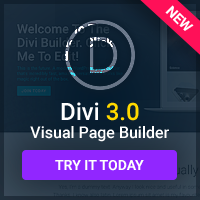Once upon a time, building a website was very expensive. Now, though, you can have a site up and running for the price of a used book, if you're frugal and careful. Getting the cheapest website you can is a great first step on the ladder, to get started on the web and see if it's for you.
Five-Dollar Domains.
If you're willing to take the less popular domains like .info, or some of the ones for specific countries, then you should easily be able to get your hands on a domain for less than $5. Some countries, such as .tk (the small island of Tokelau), even offer their domains for nothing!
Free Software.
Nowadays, it's easily possible to build a website using nothing but software you can get for free – most of the best scripting languages are free, and each one has had a lot of free software built for it by hobbyists. Check out sourceforge.net, which is a big repository of free software.
You might think that free software would be less functional than paid-for software, but you'd be wrong. Plenty of free software is simply implementations of standard software, and it works perfectly well – if you want a forum, for example, there's no clear advantage in paying massive license fees to vBulletin (the biggest seller of forum software) instead of just installing the free phpBB. The free software gives you more flexibility, and yet comes at no cost.
Free software has become an ideological movement, for people who want to be able to modify their own software, and much of the free software out there is quickly becoming widely-used and standard. Using free software doesn't make you look cheap, because users are used to seeing it everywhere – even better, the chances are that they already know how to use it.
Templates.
Depending on what kind of website you're running, you could use the design templates that come with your free software – they're usually perfectly adequate. If you don't want to do that, then a quick look around at a site like templatemonster.com is sure to turn up something suitable for your website that only costs a few dollars.
Pay as You Go Hosting.
Instead of asking you to pay monthly for hosting, more and more hosts are starting to offer ‘pay as you go' hosting, which means that you only pay for what you use. This saves you a lot of money, because websites that are starting out rarely use all the features and bandwidth they're paying their host to provide.
At nearlyfreespeech.net, for example, you add money to an account and then pay one dollar for each gigabyte of bandwidth you use. Most of these hosts allow you to start an account with very little money – the minimum is usually $5. If you keep your site light on graphics, that first $5 can last you a very long time.
Guerrilla Marketing.
Finally, one of the biggest costs associated with any website is marketing it – whether you're planning to pay for banner ads or ads in search engines, marketing is a big cost. You can save money, though, by resorting to more ‘guerrilla' techniques, such as becoming involved in online communities than you think might be interested in your website. The biggest free marketing technique out there is SEO (search engine optimisation), which is when you build your website in a way that makes it more attractive to search engines, getting you targeted visitors for free.
Taking it Further.
Once you've built your budget website, do you need to upgrade it later on when you start to get lots of visitors? Often, the answer is no. You might wish to buy a more prestigious .com domain name, and you might want to pay a professional designer to improve your design, but in most cases the path from a budget website to a big one isn't all that costly either. You might think you're building a website ‘on the cheap' but, really, that's the most sensible way to do it now – while you can go and spend thousands of dollars on software and hosting, you're unlikely to see any real benefits at all.


